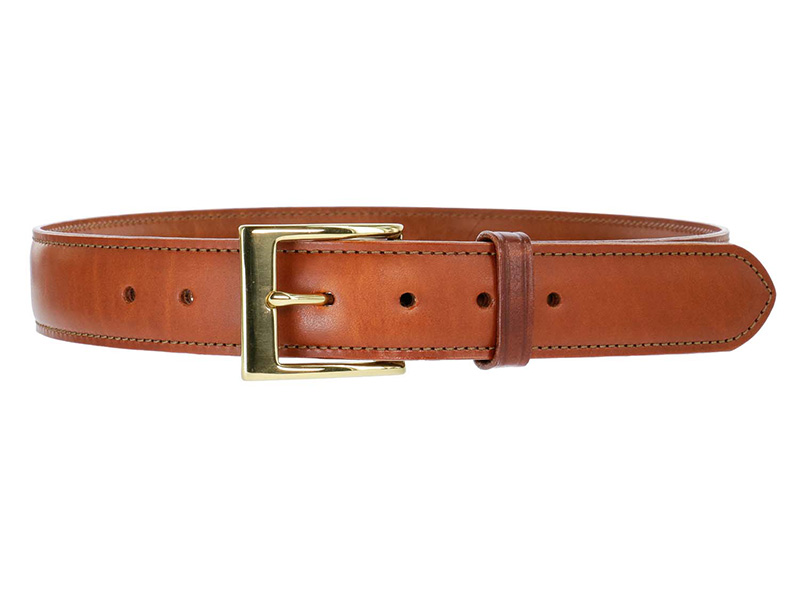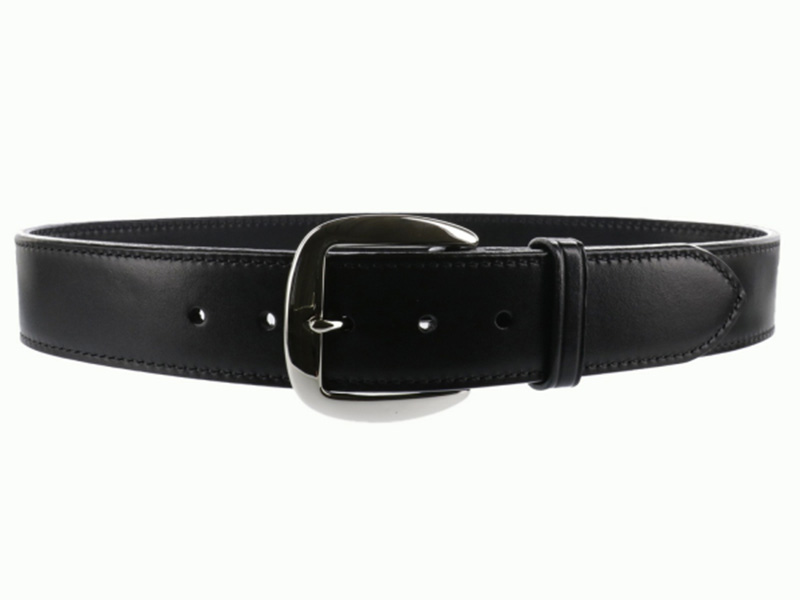Let’s discuss belts for concealed carry. Often an overlooked item in your EDC, a carry belt should be the paramount decision in your carry lineup, even before the decision on a holster or, in some cases, a gun. Whether that be a belt specifically designed for concealed carry of a firearm or one with the features needed to safely and securely conceal a pistol, a good belt will give you the confidence to carry every day. Everybody’s EDC is different for many reasons: weather, clothing, build, and comfort, to name a few. Let’s look at the basic four principles everyone should follow when selecting a belt for their situation.

Four Consideration When Choosing a Belt
- Sturdiness & Construction
- Width & Thickness
- Comfort & Concealment
- Practicality/Convenience
Let’s dive into each one of those categories.
Sturdiness & Construction
Sturdiness and construction go hand-in-hand because one affects the other and vice-versa. Firstly, firearms, ammunition, extra magazines, and accessories can be heavy. A belt with a sturdy construction helps distribute that weight evenly around your waist, preventing the belt and your pants from sagging in areas where you are carrying gear, which may lead to printing or unsafe handling of a firearm. A well-constructed and, thus, sturdy belt also aids in retaining your gear while going about your day and, most importantly, makes it harder for non-authorized individuals to access your gun. Finally, a belt with a solid construction, high-quality materials, and premium assembly will last longer, preventing premature wear and tear.
Width & Thickness
The width and thickness of a CCW belt depend on the situation in which you are using the belt. If you’re carrying in gym shorts, you may want a belt that’s lighter than the belt you’d choose with slacks or jeans. However, these principles still apply. The width of a belt directly relates to how stable the belt feels when loaded up with gear. Like above, a thicker belt will distribute weight evenly across your waist. A thicker belt will also do a better job of preventing printing. Given that you are carrying a holster with a wing, a thicker belt will provide a better wall for the wing to push against, thus pushing the pistol’s grip closer to your body.
Comfort & Concealment
Stately, and as many of you already know, comfort is paramount because, frankly, if a belt is uncomfortable, even if it is effective, the odds of continuing to use or wear it are very small. A comfortable belt and well-concealed firearm will give you great confidence and peace of mind, contributing to a sense of security and preparedness. On the other hand, discomfort will lead to anxiety, easily detracting from your ability to focus.
Practicality and Convenience
A practical and convenient belt is easy to use, quick to take off and put on, and provides fast and convenient access to your firearm when needed. It should also have a pragmatic operating system with hassle-free buckles and fasteners. Practical belts are also versatile, meeting the needs of many carry modes and offering integration and support with different holsters, firearms, and carry positions.
What Types of Belts to Choose for Different Situations
Having a rotation of EDC belts provides versatility, prolongs the lifespan of your belts, ensures adaptability to different clothing options, and enhances comfort and concealability in various situations. By rotating between belts, you can effectively meet the demands of everyday carry while maintaining comfort, functionality, and concealment. Here are some considerations in belts you should have:
- EDC belt for slacks or jeans: Your “go-to” for most situations.
- EDC belt for clothing without belt loops: tailored for gym shorts, sweatpants, or track pants.
- Dress belt for concealed carry support: a belt that combines functionality and style to work with a formal appearance.
- Specialized belts, like a belly band: Belts or other concealed carry options where traditional belts may not be optimal. I’m not saying the belly band is the go-to here—just an example.
The Belts I Personally Use
Before we get into my belt choices, let me tell you my EDC. I rotate between a Smith & Wesson CSX with the 12-round magazine and an M&P Shield Plus with a 4″ barrel, Vortex Defender, and 15-round magazine. If I have the space, I also carry a Surefire Stiletto, Karambit Knife, and a CAT-7 tourniquet.
1. Tan Galco SB3 Dress Belt
I often choose my Tan Galco SB3 Dress Belt at a 1.5″ width as my everyday belt. This option could double as my dress belt, but I often wear slacks or jeans on most days. I find myself wearing this belt more and more as I break it in. It hasn’t lost any rigidity but seems more comfortable as I put more days on it. It is an excellent cross between looks and functionality while checking the box for rigidity and comfort.

2. The Constantine Carry Belt
The Constantine Carry Belt is my choice of belt to wear with sweatpants and shorts. Before using it, I had my concerns about this belt, mainly how it would stay around my waist and not ride up as I went about my day. I usually wear jogger-style sweatpants or short gym shorts when I choose this belt. As such, I was curious to know if the waistband of these pants would keep the belt in its place. I was pleasantly surprised. Following Hunter’s instructions, you put the belt underneath your pants and clip your holster into the belt and the pants. Then, I tighten the drawstring of my pants, and the belt does not move. It balances beautifully and is extremely comfortable. I feel like it’s a trope, but the ultimate goal for a CCW is to “forget” it is there. For it to be so comfortable, you don’t worry about it. The Constantine Carry Belt does just that, and that’s why I find myself using it more and more.

3. SB5 Casual Holster Belt
For my “dress belt,” I also went with a Galco. Unlike its name, the SB5 Casual Holster Belt, which is 1.75″ in width, has been the perfect choice for me when wearing something more formal. I went with the thicker design because while it takes some points away in the comfort department, it does a fantastic job of pushing the grip of my pistol into my body. This factor is essential because usually, when choosing this belt, I’m not wearing clothing great for concealed carry, which may lead to more printing.

4. A Fanny Pack: The Specialized Wild Card
I break my own rules with the last choice. That’s why I called it “specialized.” If I am uncomfortable with the above choices for belts, I carry my CSX in a fanny pack in the cross-body position. Knowing the woes with off-body carry, I can draw and get shots on target in this configuration very quickly, giving me the confidence and peace of mind to do it. When I choose this option, I always carry in a fanny pack that is not designed for concealed carry. Yes, you read that right. I want an everyday, run-of-the-mill fanny pack with a big enough pocket to shove a gun in a holster. I do not want people to know that I have a gun in there, and choosing a regular fanny pack mitigates that issue for me.
So there you have it! What does your belt rotation look like? Let us know in the comments.

